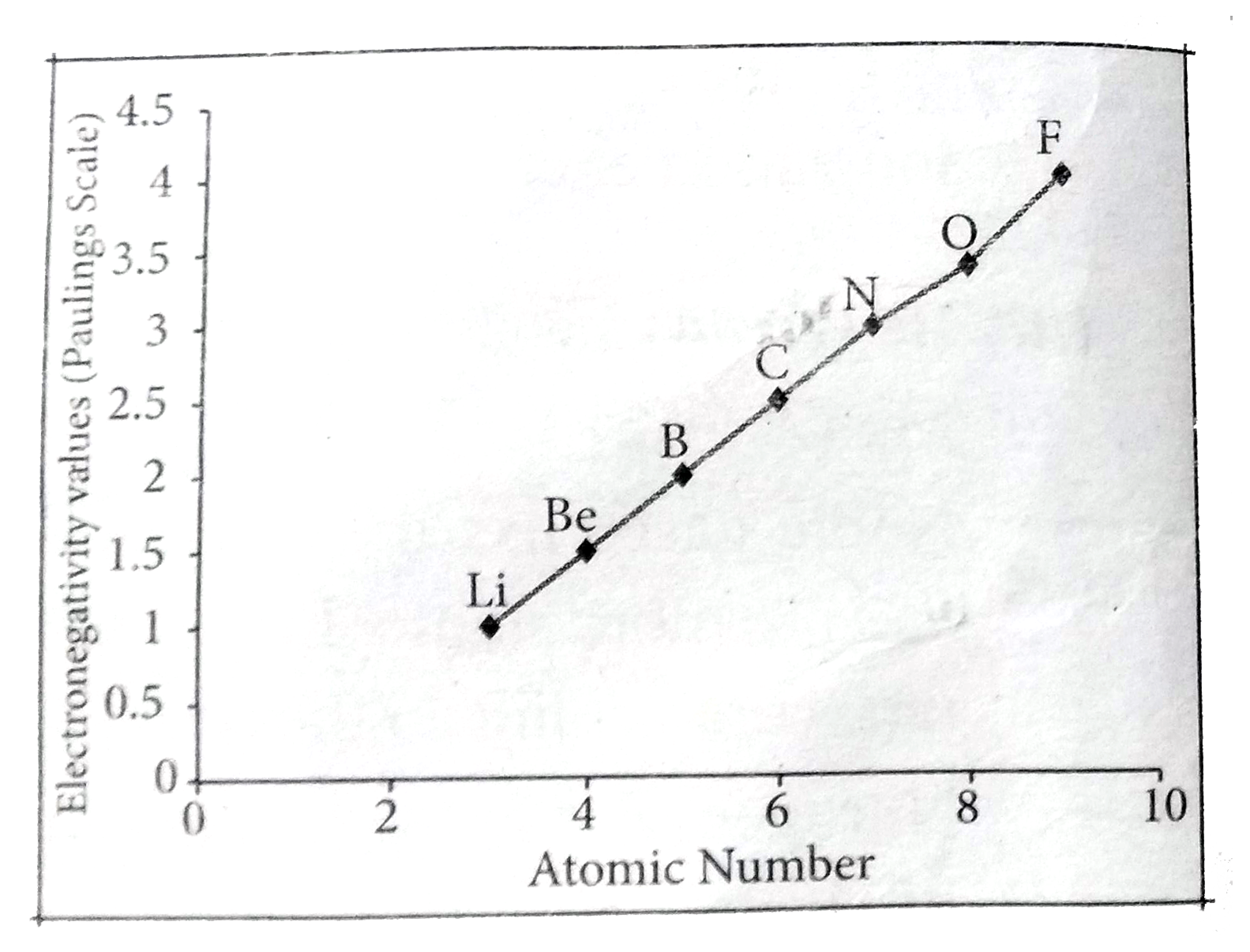State the trends in the variation of electronegativity in group and periods.Solution in Tamil
Variation of electronegativity in a period: The Variation of Electronegativity along I period electronegativity increases across a period from left to right. Since the atomic radius decreases in a period, the attraction between the valence electron and the nucleus increases. Hence the tendency to attract shared pair of electrons increases. Therefore, electronegativity increases in a period.
Variation of electronegativity in a group: The electronegativity decreases down a group. As we move down a group, the atomic radius increases and the nuclear attractive force on the valence electron decreases. Hence electronegativity decreases in a group.
Topper's Solved these Questions
- BOOK - FULL MARKSCHAPTER - PERIODIC CLASSIFICATION OF ELEMENTS EXERCISE - In-Text Question-Evaluate Yourself7videos
PERIODIC CLASSIFICATION OF ELEMENTS
- BOOK - FULL MARKSCHAPTER - PERIODIC CLASSIFICATION OF ELEMENTS EXERCISE - Additional Questions(M.C.Q)38videos
PERIODIC CLASSIFICATION OF ELEMENTS
- BOOK - FULL MARKSCHAPTER - PERIODIC CLASSIFICATION OF ELEMENTS EXERCISE - Textual Evaluation Solved(Choose the correct answer)10videos
PERIODIC CLASSIFICATION OF ELEMENTS
- BOOK - FULL MARKSCHAPTER - HYDROGEN EXERCISE - Additional Questions Solved 5-Mark Questions10videos
HYDROGEN
- BOOK - FULL MARKSCHAPTER - PHYSICAL AND CHEMICAL EQUILIBRIUMEXERCISE - ADDITIONAL QUESTIONS SOLVED (NUMERICAL PROBLEMS)3videos
PHYSICAL AND CHEMICAL EQUILIBRIUM
Similar Questions
What is the basic difference in approach between Mendeleev's periodic table and modern periodic table?
02:52View SolutionThe law of triads is not obeyed by
View SolutionAssertion : Helium has the highest value of ionisation energy among all the elements known
Reason : Helium has the highest value of electron affinity among all the elements knownView SolutionExplain about the different industrial preparation of hydrogen.
03:49View SolutionFind the value of Kc for each of the following equilibria from the value of Kp
(a) 2NOCl(g)⇔2NO(g)+Cl2(g),KP=1.8×10−2 atm at 500 K
(b) CaCO3(s)⇔CaO(s)+CO2(g),KP=167 atm at 1073 K02:51View SolutionWhat is the periodic trend in the variation of valency while going down a group? Explain your answer with reserence to the group 1, group 2 and group 18.
07:25View SolutionThink about it, What is the periodic trend in the variation of valency while going down a group? Explain the answer with reference to group 1, group 2 and group 18.
03:28View SolutionWhat is the periodic trend observed in the variation of atomic radii down a group?
06:08View SolutionExplain about periodic variation of electronegativity across a period.
07:45View SolutionExplain about the period variation of electronegativity along a group.
01:13:31View SolutionWhat is the periodic trend observed in the variation of atomic radii down a group?
View SolutionGive the trend of electronegativity of elements of Group-VA.
02:00View SolutionExplain the trend in general of iſ electronaffinity ii] electronegativity of elements -
on moving down a group. Give reasons for the change in each periodic trend.01:12:20View SolutionChanges in the properties of elements occurs on moving top to bottom in a group of the periodic table. Discuss the trend of electronegativity along the group.
41:56View SolutionPeriodic Trends#!#Atomic Radii#!#Electronegativity
42:39View Solution

